The Jeep Wrangler 4xe: the one to get?

It’s odd to see an electric charging cable plugged into the side of a new 2021 Jeep Wrangler 4xe. With live axles, a manual transfer case, and removable doors, the Jeep Wrangler seems like the natural antithesis of the automobile’s electrified future.
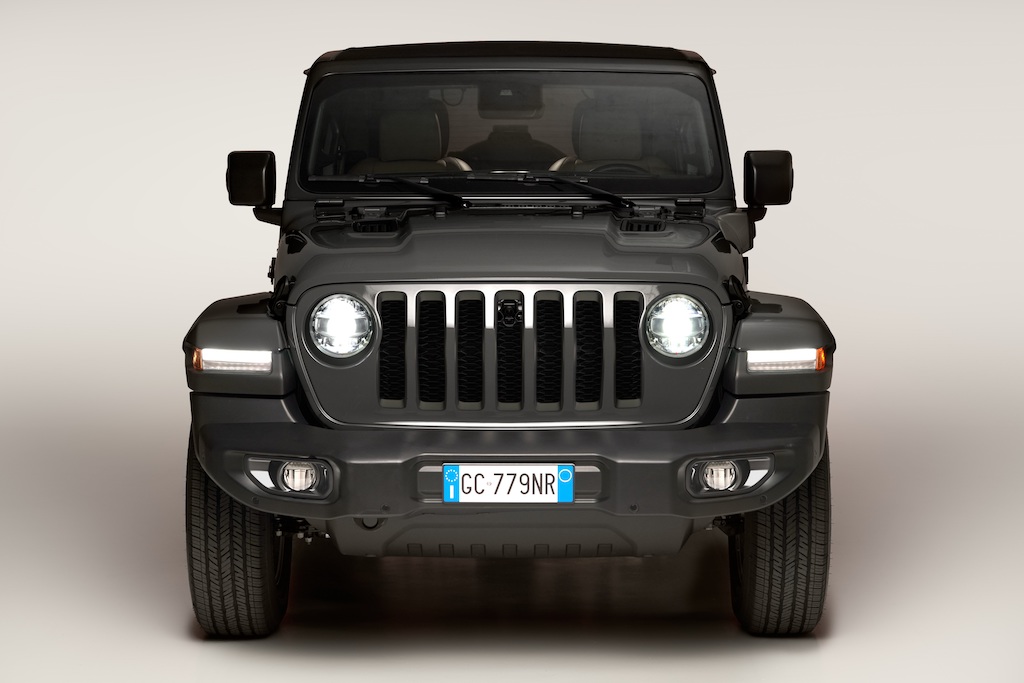
The Wrangler 4xe (pronounced “four-by-e”) is Jeep’s third plug-in hybrid and will be followed by plug-in versions of every other Jeep by 2025, parent company Stellantis announced. I tested the 2021 Jeep Wrangler 4xe and found that it largely lived up to both the Wrangler legend and the promise of a plug-in hybrid.
This Jeep is an iconic vehicle known the world over for ruggedness and go-anywhere capability. The very first Jeep, in fact, hit World War II battlefields almost 80 years ago now.
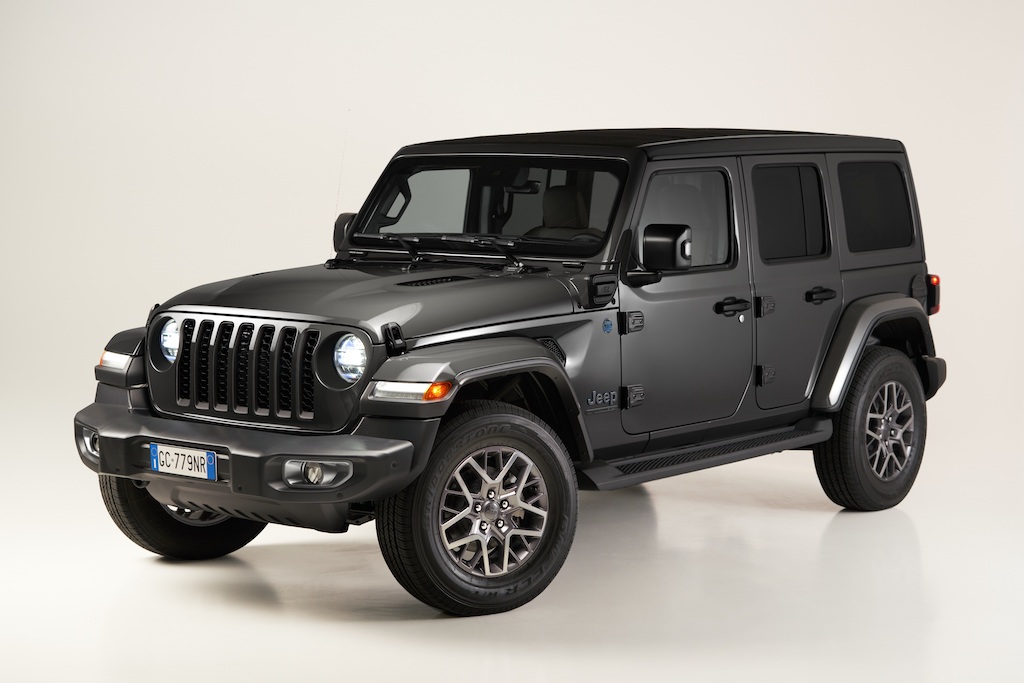
Its modern-day descendant, the Jeep Wrangler, is redesigned about once per decade. It was all-new for the 2018 model year, and was engineered from the start to accommodate 2021’s PHEV version. The plug-in powertrain is offered only in the four-door Wrangler Unlimited model, not the shorter two-door Wrangler. The 4xe’s 17.3 kWh battery pack sits under the rear seat.
The Wrangler 4xe remains instantly recognizable, including the flat windshield and fenders. The only distinguishing marks of the 4XE are a bulge in front of the driver’s side mirror for a charge port and blue trim on the badges and tow hooks.
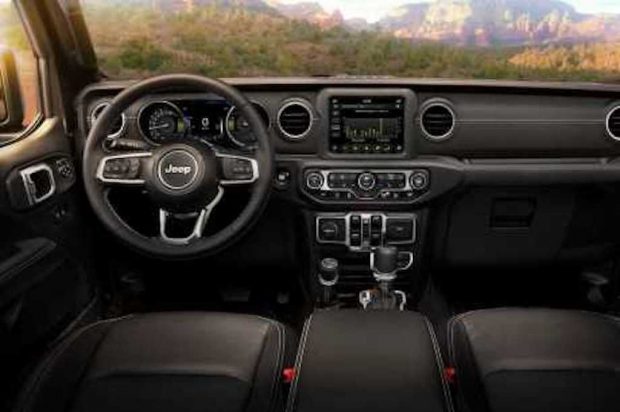
The 4xe’s interior is nearly identical to every other Wrangler’s. In terms of physical changes, there’s a light bar atop the dashboard to indicate battery charging status, as well as PHEV-specific drive mode buttons to the left of the steering wheel and the Max Regen button below the touchscreen. The instrument panel and touchscreen also have 4xe-specific displays, and the touchscreen even has hybrid-specific “pages” similar to the performance pages in several Stellantis performance cars.
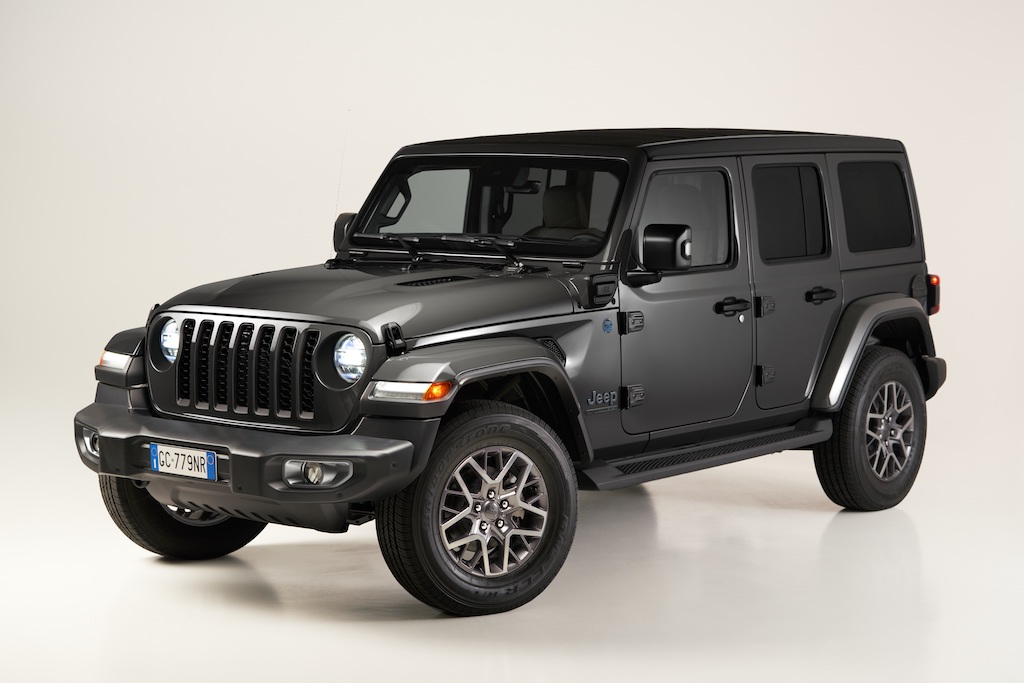
The 4xe’s backseat was redesigned to accommodate the battery pack, which sits under the seat and high up inside the frame, allowing the 4xe to retain its off-road abilities (and protect the battery in those scenarios). The result is a backseat that no longer folds completely flat, with a slight outcropping behind it that cuts into cargo space. Compared with non-PHEV Wranglers, Jeep estimates the 4xe loses 4 cubic feet of cargo space with the backseat up and 5 cubic feet with the seat folded.
Comfort is still hit or miss in the Wrangler. With the doors and roof attached, the front seat feels a bit cramped and narrow for my liking. Legroom and headroom were adequate in back.
The Jeep’s electric motor is rated at 100 kilowatts (134 horsepower). It’s sandwiched between a 2.0-liter turbocharged 4-cylinder engine (rated at 270 hp and 295 lb-ft of torque) and the 8-speed automatic transmission. The combination is connected to a transfer case that distributes power mechanically to all four wheels. This Wrangler 4xe goes from 0-100km/h in 6.0 seconds.
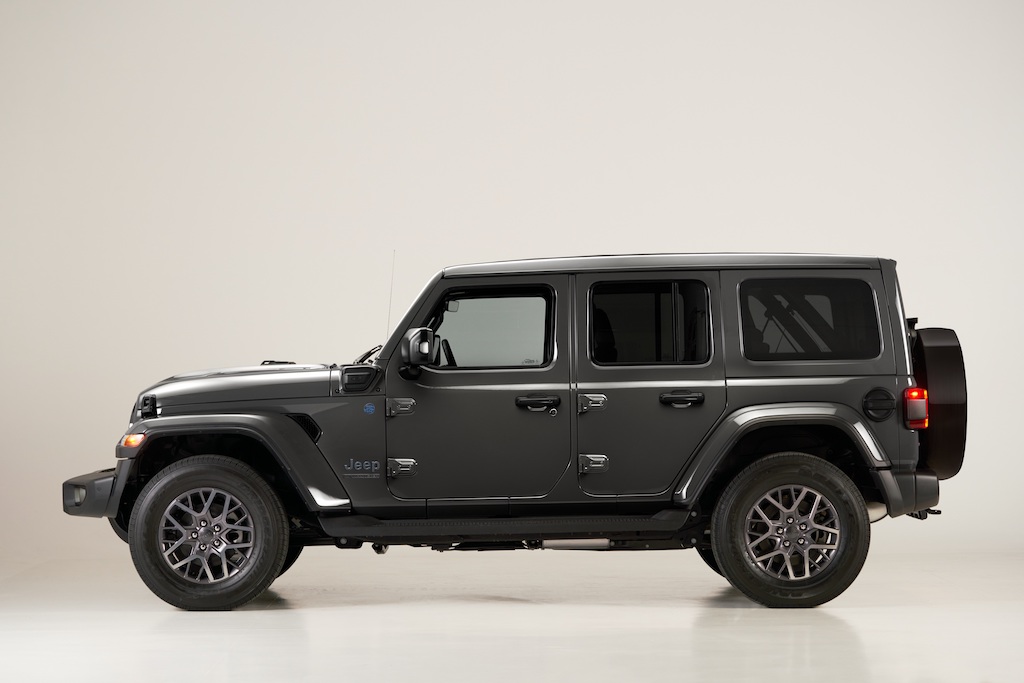
The charging port sits high up on the cowl, between the back of the hood and the front edge of the driver’s door. It’s covered by a latched black plastic cover.
Inside, a row of three buttons lets users select among Hybrid (the default), Electric (when the battery is charged), and e-Save (to hold battery charge for later use) modes. The e-Save button also toggles to invoke Battery Charge, which recharges the pack using engine power.
I really wish I had been able to drive the 4xe off-road because its on-road experience wasn’t any better than other Wranglers I’ve driven, which is to say … OK. Like other Wranglers, the 4xe required constant steering corrections to keep it tracking straight, and the ride, while not overly firm, still felt pretty clumsy. This is the price one pays for the Wrangler’s off-road prowess and cultural cool factor, but without getting to drive it off a paved road, I came a bit frustrated. Jeep says the 4xe’s 17.3-kilowatt-hour battery can be fully charged in roughly two hours with a 240-volt Level 2 charger capable of 7.2 kilowatts or higher, which is pretty typical.

The Jeep Wrangler got a full redesign that launched in late 2018 and remains essentially unchanged for 2021 except for the addition of a new plug-in hybrid powertrain. With a lithium-ion battery under the back seat, it can do all the rock crawling Wranglers have ever done, emissions-free over 22 miles.
The Jeep Wrangler Unlimited 4xe gets this plug-in hybrid powertrain but very much remains a Jeep Wrangler, just one with better fuel economy — so long as you keep the battery charged.


